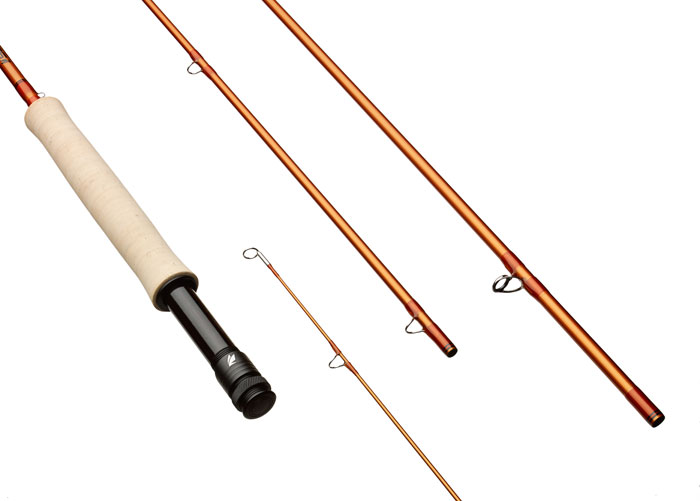By Kirk Deeter
I like fast action rods. Especially in saltwater situations. But who doesn’t? I know, I know, we’re supposed to appreciate the more “pure” action of more moderate rods, just like an avid golfer is supposed to aspire to hit blade irons on steel shafts. But when you start swinging those blades around, and spraying the ball around, it’s kind of nice to have a larger sweet spot on the clubface. And fast action fly rods have done to fly fishing what oversized driver heads and graphite shafts have done to golf. There are legions and legions of little old men who have embraced the technology, whether it works for them or not, and they’re never going back.
I recently took a quiver of 8-weights on a trip to Christmas Island, and I will be reviewing all of them, but I will start with the BOLT, because that’s actually the rod I fished the most. But the reason I fished it the most, truth be told, was because it has a orange-ish paint job (Sage calls it “Salmonfly”), so it stood out on the rod rack from the scads of other greens and blues that other anglers fished. In other words, I could always find my rod quickly.
Built with Generation 5 graphite, it’s billed as ultra-fast action. I buy that. It’s definitely a wind cutter, and it’s fairly easy to form tight, travelling loops with a standard matching weight fly line. It’s also a “reach out and touch someone rod” that can easily toss 60-plus feet of line with an average-timed stroke. The true “sweet spot” distance on the rod is 50-60 feet. It goes beyond that, depending on the caster’s ability. But a fairly newbie saltwater angler should be able to coax regular and reliable 50-footers from this rod.
As you might expect, though, it’s stiff as hell, and you pay for that inside 30 feet. Not that you do a lot of roll casting at cruising bonefish on CXI, but actually… you do. The other thing is, if you find yourself driving a cast downward, you’re going to pound the fly into the water. The caster must make a conscious effort to finish the cast higher above the surface, and let the fly plop.
I alternated casts one afternoon between the BOLT and a Loomis NRX, and they feel almost the same from the butt section until about two-thirds up the rod. There the Loomis has its famous subtle flex in the tip section. That’s just not there in the BOLT… not to the same degree.
I’m not saying that’s a bad thing, it’s just different. If you like the tip flex, and you like to feel the line turn over at the end of the rod, this isn’t the model for you.
If, on the other hand, you just want to boom away, you’ll love it. There were times when I got in a groove with BOLT and absolutely loved it, and thought it was amazing. And there were times, when the scenario changed, where I didn’t like it as much. Any rod should ultimately be measured more for the types of flies and sizes you are throwing, more than any other factor.
An 8-weight is actually the top of the range for BOLT as it’s billed as “all-water.” The niche is fast rather than any one species or setting, and it actually makes sense for this type of specialty rod, especially since it costs $650. In other words, if you don’t want to spend $800 plus for a streamer rod, or an open lake carp rod, where you know the wind is always a factor, it’s definitely a player.
Think of it like buying a very stiff ski for carving on hard-packed snow. BOLT is a very specialized tool, and you need to be sure it falls into your niche before opting for this over one of the other more “all-around” (all-mountain ski) options from Sage or other companies.
******* Seven out of 10 stars for a flats fishing situation.





2 Comments
Excellent review of the Sage Bolt 8 weight by Kirk Deeter. Spot on, accurate and reliable info for anglers wanting a “stick’ on the flats.
I have the 790-4. Very good casting rod and bought it as a SW salmon stick. Why the small guides? They have 12-10 stripping guides yet all their other 7 weights plus ones of years past are configured 16-12. Just seems odd.